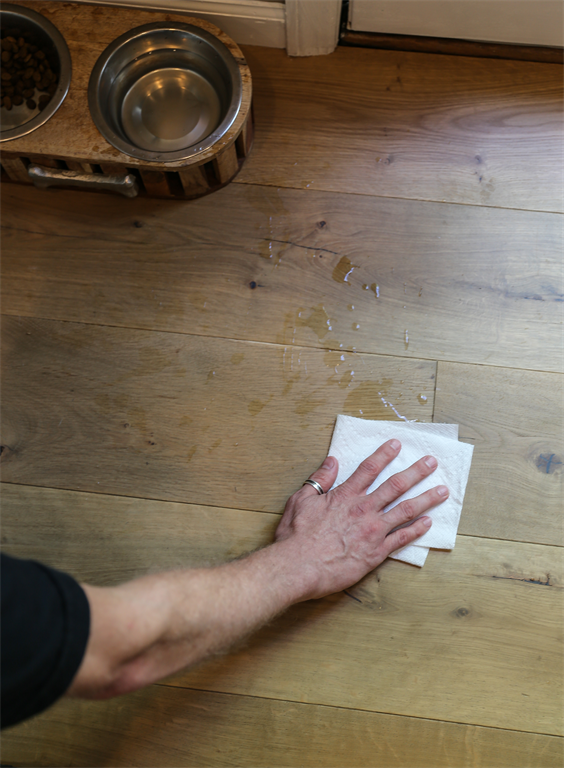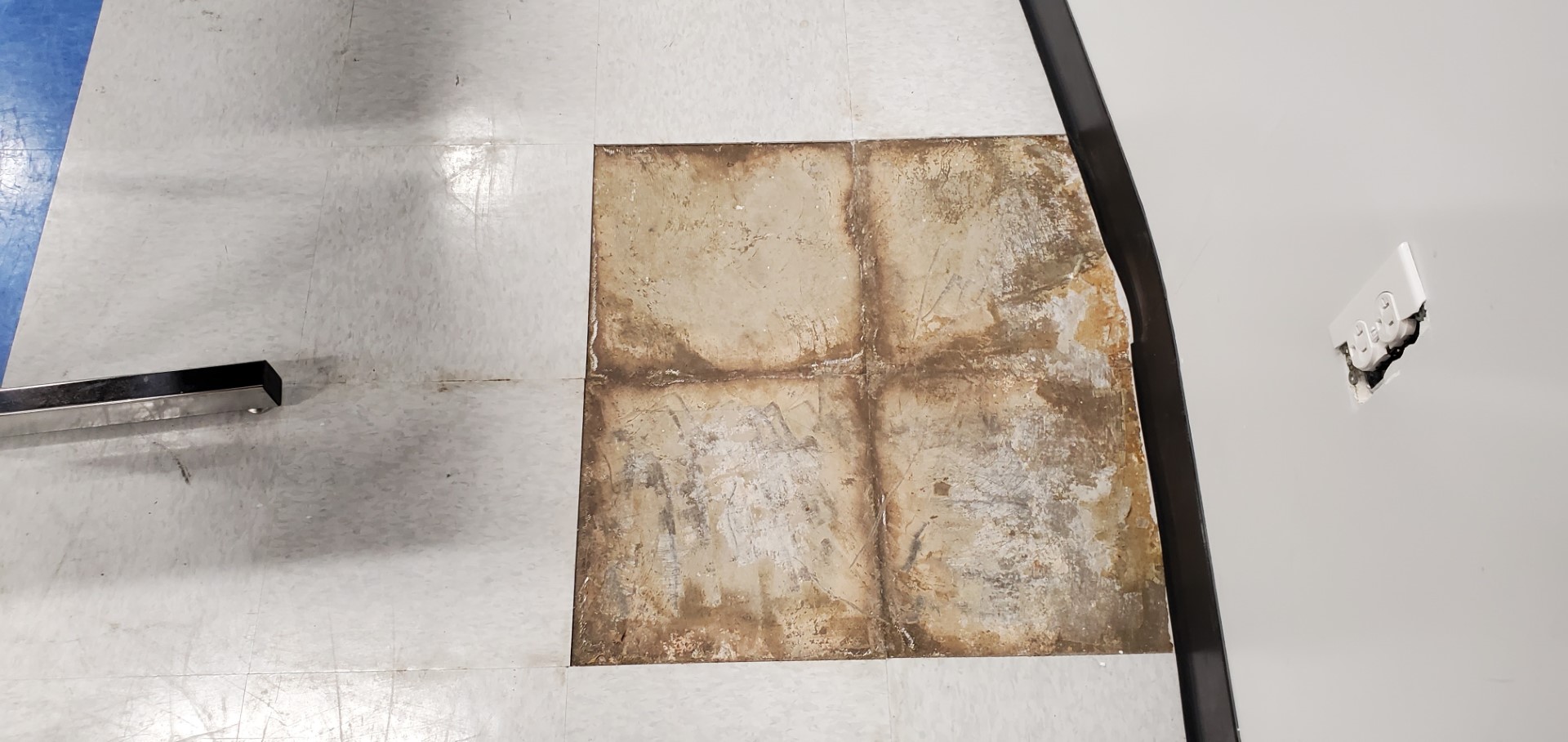By Gary Scheidker, Director of Technical Services, Taylor Adhesives
These unique requirements are each important and can make a significant difference in the immediate and long-term success of the floor. Since these projects can take a while to start and complete, you need to either lock in cost or add a price increase clause to cover any unforeseen material or labor cost overruns.
Flooring, wall covering, substrate preparation and adhesive selection:
Selecting the right flooring and adhesive for the application is a critical first step in any project but even more so for healthcare applications. Nursing homes and assisted care facilities have their own set of challenges since flooring replacements will generally be more frequent. A private medical office will have less stress on the flooring assembly than an urgent care or walk-in clinic. Similarly, a major hospital with an emergency trauma center, operating rooms, and patient rooms will put the most stress on floor covering assembly. Operating rooms will typically require either homogeneous or heterogeneous heat welded vinyl with flash cove to provide a sanitary environment. Some applications may also require wall panels that are heat welded at all the seams and at the flash cove as part of a monolithic envelope to provide a sanitary environment.
I recently ran into a situation where an LVP product was specified for wall covering in a nursing home. The issue with this was the LVP did not have a vertical burn rating. You need to research every component of the installation so you can avoid delays and liability. Before you select your floor covering, wall covering, substrate prep and adhesives, you need to know what type of abuse the floor will be subjected to. You should also guide your customer and their architect or designer in the right direction if they select an inappropriate product. Remember you are ultimately responsible for the success or failure of the floor since you are the flooring professional.
New Construction:
It is important that you know what you are getting into before you start the project. Concrete curing compounds, admixtures, sealers, bond breakers and deicers can all create problems for resilient flooring. Some of these products may require additional substrate preparation to remove or control them. Monitoring the ambient temperature and humidity during acclimation all the way up to occupancy is critical. I recommend using a system like Floorcloud® to make certain the space is under HVAC control at service temperature and humidity. Remember to follow the manufacturer’s guidelines for acclimation. Moisture testing per ASTM F2170 or ASTM F1869 and pH testing per ASTM F710 is essential. Unfortunately, proper moisture testing requires the space to be under HVAC control for a minimum of 72 hours prior to starting the testing process. You will need to include a clause in your contract for moisture mitigation if needed. Many architects are now including moisture mitigation as part of their specification, which is great for our industry. Check to see what arrangements the general contractor has made for secure space to store product and equipment on site. You may need to supply a storage container and even a forklift on some projects.
Remodel:
Working in an occupied facility will present a unique set of problems. I recommend including SDS and TDS documents for every component that will be used in the installation in your submittal. This includes flooring, underlayment, patch, leveling products, adhesives, and seam sealers. Know the age and history of the building and substrate. Moisture testing per ASTM F2170 or ASTM F1869 and pH testing per ASTM F710 is important. You should also consider the age of the slab as part of the evaluation. Remember an older slab with high moisture readings indicates moisture intrusion from an external source. This type of moisture intrusion indicates the absence of a functioning under-slab vapor retarder. Test for lead and asbestos if the building age is from the period where they could have been used in paint or floor covering. The space will need to be sealed to prevent dust and construction odors from entering occupied areas. You will need to remove the existing flooring and prepare the substrate with as little noise and dust as possible so planning is critical. The general contractor should make space to store product and equipment and you may need to supply a storage container and forklift on certain projects.
Qualified labor:
Remember not all installers have equal skill levels. Having a pool of qualified floor mechanics available will be essential for a successful on time completion. Finding enough qualified mechanics to complete the project in the allotted amount of time can be a challenge in certain markets. Some projects may even require mechanics that can pass a background check. This is not always as easy as it sounds. If you are a union shop in an area with a good training and apprentice program the availability of qualified labor is generally good. If you are not a union shop, you may want to contact one of the independent training organizations like International CFI, INSTALL, IUPAT, AFT, NAFCT, or UNITE to find qualified resilient flooring mechanics in your area.
Environment:
Every area has its own unique set of challenges. Large healthcare projects can take a long time to complete. This means that the project may start in the spring and continue through winter or longer. Each season will bring on new challenges, which in some areas can be significant. You need to consider this when you bid a project especially regarding a commitment to a completion date.
Liquidated damages:
This is where the completion date comes into play. If you miss the agreed upon completion date, the liquidated damages can be significant. When you make a commitment to a date to have a floor ready to be turned over for occupancy, you need to make certain that it is attainable. Your project manager needs to monitor the progress of the project to make certain the project is moving along as planned. Additional personnel or equipment may be needed if the project starts to run behind schedule.
Maintenance:
Your responsibility for the floor does not end when the floor is completed. Improper maintenance can create issues with even the best flooring installations. It is important that you provide the facilities management department with the proper care and maintenance of the flooring product being installed. This should include proper cleaning methods, cleaners, and finishes. You need to know the specific maintenance requirements for the type of facility you are working in. These requirements can vary from state-to-state or even county-to-county. Some of these aggressive cleaning methods may stress the flooring in unforeseen ways. For instance, assisted care and nursing homes may be required to clean the common areas twice a day using hot water extraction units. This cleaning method will soften the floor every time it is used, causing the flooring to contour to any substrate irregularities and telegraphing them through the flooring. Extreme care to substrate preparation and back rolling adhesives will go a long way to avoiding an issue from this cleaning method. Planning ahead can save you headaches in the future.






